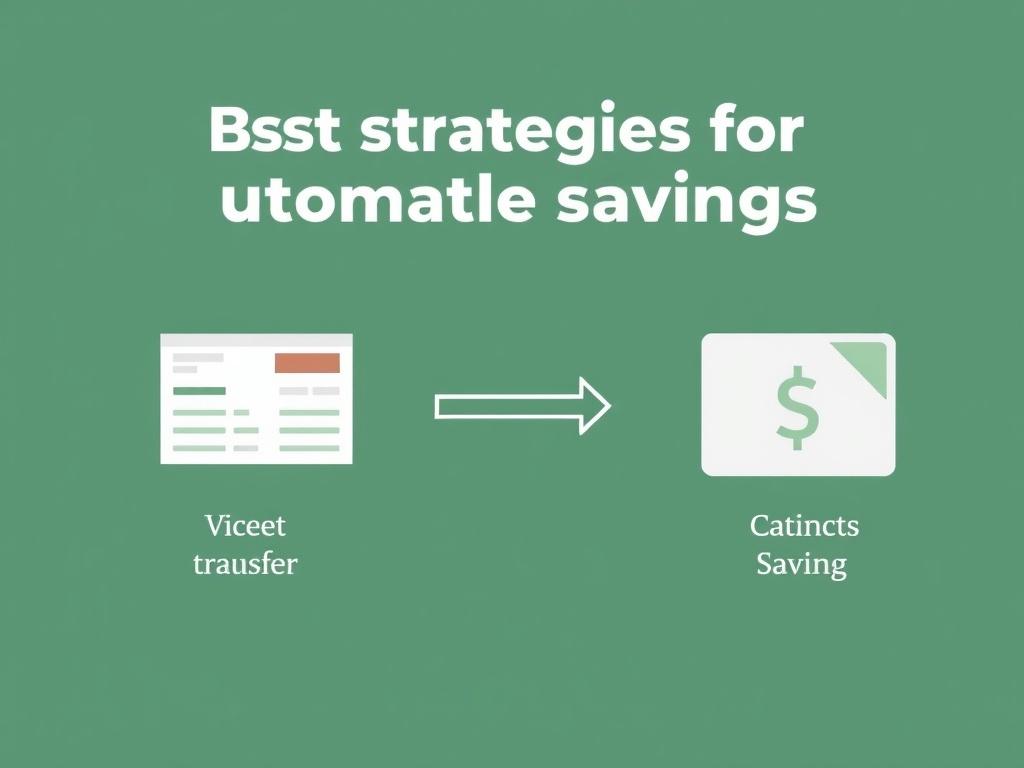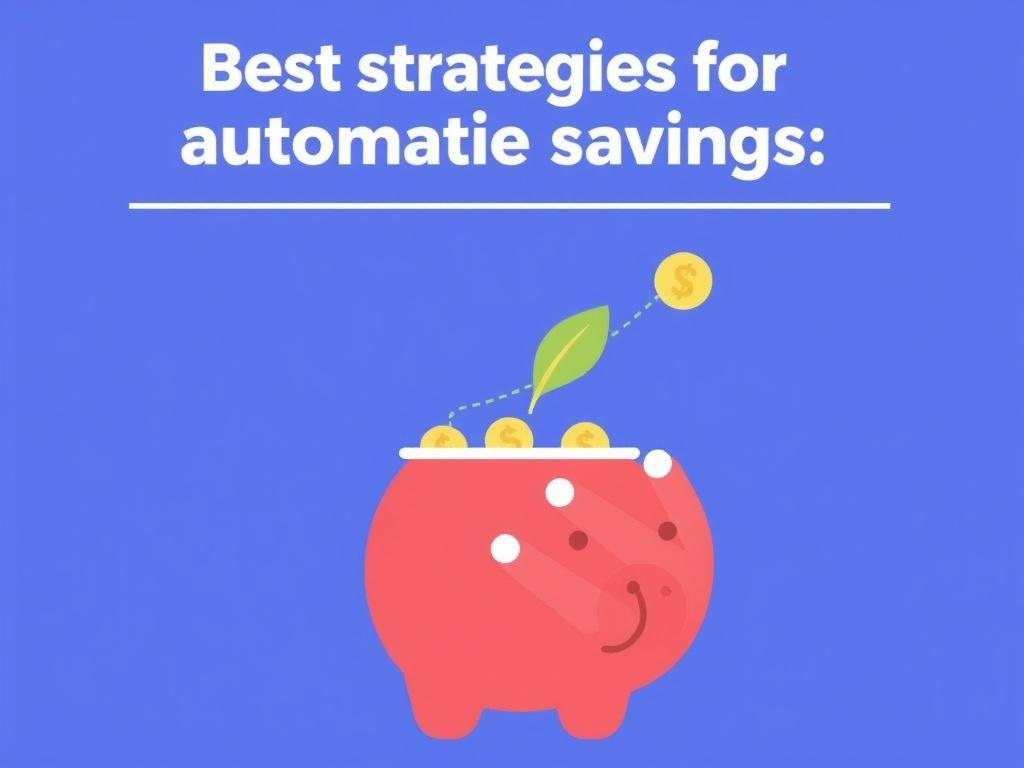SQLITE NOT INSTALLED
Saving money can feel like a daunting task for many people. It often requires discipline, time, and consistent effort—the kind of effort that’s easy to postpone or forget in the hustle and bustle of everyday life. But what if there was a way to build your savings without constantly thinking about it? That’s where automatic savings strategies come into play. When you set up your finances to save money automatically, you create a powerful habit that steadily grows your wealth with minimal effort. In this article, we’ll explore the best strategies for automatic savings that can help you reach your financial goals faster, reduce stress, and put your money management on autopilot.
Содержание
Why Choose Automatic Savings?
Many people struggle with saving because they rely on willpower alone. Setting aside money after paying bills or covering daily expenses is tempting to skip, especially when unexpected costs come up. Automatic savings solves this dilemma by taking the decision-making and manual effort out of the equation. When a portion of your paycheck or bank account is automatically transferred into a savings account or investment vehicle, you’re effectively “paying yourself first.” This approach makes saving effortless, consistent, and less prone to the impulse of spending your hard-earned money.
Automatic savings not only helps you avoid the common pitfalls of saving inconsistently but also leverages the power of compounding. The more frequently and steadily you contribute to savings—even small amounts—the more your money can grow over time. By combining automation with smart saving strategies, you can ensure money moves toward your goals without setting reminders or battling with temptation. Now, let’s dive into the best strategies for automatic savings to help you build wealth efficiently.
1. Set Up Automatic Transfers from Checking to Savings

One of the simplest and most effective strategies for automatic savings is setting up a recurring transfer from your checking account to your savings account. Most banks and credit unions offer an easy-to-use feature that lets you schedule transfers on a daily, weekly, bi-weekly, or monthly basis. The key is to choose an amount you can comfortably part with regularly without feeling a pinch.
Choosing the right transfer schedule depends on your payday and spending habits. For example, many people find it easier to set transfers right after payday, ensuring you save before spending. Here’s how you can approach it:
- Identify a fixed savings amount. Even $25 or $50 a week can add up significantly over time.
- Automate the transfer schedule. Align it with your pay schedule for consistent saving.
- Select a separate savings account. Keeping savings separate helps reduce the temptation to dip into funds.
| Frequency | Example Transfer Amount | Estimated Annual Savings |
|---|---|---|
| Weekly | $25 | $1,300 |
| Bi-Weekly | $50 | $1,300 |
| Monthly | $100 | $1,200 |
By automating these transfers, you create a savings habit that accumulates steadily without your daily intervention.
2. Utilize Round-Up Features on Debit and Credit Cards
A particularly clever automatic savings strategy that many banks and financial apps offer is the round-up feature. Each time you make a purchase with your debit or credit card, this feature rounds the transaction up to the nearest dollar and transfers the difference into a savings or investment account. Imagine buying a coffee for $3.75 and having 25 cents automatically saved without you lifting a finger.
This method works incredibly well because it saves “spare change” throughout the day—amounts so small that you barely notice them but which can compound meaningfully over months and years. Thanks to technology, setting up round-up savings has never been easier, and many financial institutions offer this service for free or as part of their mobile app.
Benefits of the round-up automatic savings include:
- Saving small amounts frequently without feeling it.
- Building a savings habit with zero effort.
- Turning everyday purchases into wealth-building opportunities.
While the amounts are small per transaction, they add up fast. For people who struggle to save larger lump sums, round-up savings offer a gentle but effective entry point.
Top Apps Offering Round-Up Savings
Here is a brief list of popular applications that support automatic round-up savings:
| App Name | Key Features | Fees |
|---|---|---|
| Acorns | Round-up investing, portfolio management | $1–$3/month |
| Chime | Automatic round-up, fee-free savings | Free |
| Qapital | Custom rules, round-up, goal trackers | $3–$12/month |
Choosing an app depends on whether you want to just save cash passively or combine automatic savings with investing.
3. Use Employer-Sponsored Retirement Plans for Automatic Contributions

When thinking of automatic savings, many overlook employer-sponsored retirement plans like 401(k)s, 403(b)s, or similar programs. These plans typically allow you to designate a percentage of your paycheck to be automatically deducted and contributed toward your retirement. What makes them remarkably powerful is the combination of:
- Automaticness: Your savings happen without any action on your part after enrollment.
- Employer matching: Many employers contribute matching funds up to a certain percentage.
- Tax advantages: Contributions are often pre-tax, reducing your taxable income.
If your employer offers a matching program, you’re essentially receiving free money to boost your savings, which is arguably one of the best financial incentives out there. The challenge is often simply enrolling and choosing a sensible contribution rate.
Tips for Maximizing Employer-Sponsored Automatic Savings
- Start with at least enough to get the full employer match.
- Increase your contribution rate over time. For example, bump it up 1% each year or after raises.
- Review your investment choices. Automatic contributions don’t mean automatic investing — pick funds that match your risk tolerance.
Employers make it easier than ever to save for the long term, so leveraging these plans should be a cornerstone of your automatic savings strategy.
4. Take Advantage of Automatic Savings Apps and Services

Technology has transformed the way we save money. Automatic savings apps provide smart tools to help you effortlessly build your savings by analyzing your spending habits, helping set goals, and incentivizing saving behavior.
Some apps do more than just automate transfers—they offer sophisticated features such as:
- Personalized savings recommendations based on income and expenditures.
- Goal-based saving buckets (vacation, emergency fund, etc.).
- Behavioral nudges and rewards to keep you motivated.
- Automatic adjustments to savings based on your cash flow.
These features make saving more interactive and tailored, boosting your commitment through ongoing positive feedback.
Popular Automatic Savings Apps to Consider
| App | Main Benefits | Cost |
|---|---|---|
| Digit | AI-driven micro-savings, goal tracking | $5/month after free trial |
| Simple (before closure) | Automated budgeting and saving buckets | Free |
| Chime | Fee-free round-ups and automatic savings transfers | Free |
Before choosing an app, consider your financial priorities and what type of automated savings you want—passive or proactive.
5. Automate Savings for Specific Goals
Automatic savings don’t have to be one-size-fits-all. One of the best ways to stay motivated and manage your money is to set up separate savings goals and automate contributions to each. Whether it’s for a dream vacation, a down payment on a house, or an emergency fund, separating the money helps you avoid mixing funds and lets you track progress clearly.
Here’s how to implement this strategy effectively:
- Identify your savings goals. Write them down clearly and assign a timeline.
- Open multiple savings accounts or sub-accounts within one bank. Many banks now support “envelopes” or goals inside a single account.
- Set up automated transfers for each goal. Adjust amounts depending on priority and timeline.
- Regularly review your goals. Adjust contributions or timelines if your financial situation changes.
This focused approach taps into your emotional motivation, turning automatic savings into a meaningful journey rather than a faceless balancing act.
Example of Goal-Based Automatic Savings Setup
| Goal | Monthly Savings Amount | Target Amount | Time Frame |
|---|---|---|---|
| Emergency Fund | $200 | $6,000 | 2.5 years |
| Vacation | $100 | $2,400 | 2 years |
| Home Down Payment | $500 | $18,000 | 3 years |
This strategy is particularly helpful for people who find generic savings uninspiring.
6. Use Payroll Deduction with Financial Institutions or Credit Unions
Beyond employer-sponsored retirement plans, some financial institutions and credit unions allow direct payroll deductions to savings accounts. This is a straightforward and safe way to grow your savings pot without manually transferring money from your paycheck.
Advantages include:
- Saving before the money hits your bank, reducing temptation.
- Consistent deposits reinforcing discipline.
- Often linked to higher savings rates or incentives.
If your employer supports this setup, ask your HR or payroll office for details and how you can enroll.
7. Automate Debt Repayment and Redirect Savings
An often overlooked strategy related to automatic savings is to automate your debt repayments. The faster you pay off high-interest debts like credit cards or loans, the more money you will free up to redirect into savings or investments.
Here’s how this compound automatic savings tactic works:
- Set up automatic payments to cover minimum amounts plus a little extra.
- Once a debt is paid off, automatically redirect the freed-up money to your savings account.
- Repeat as you pay off subsequent debts, increasing your saving rate over time.
This approach links debt repayment and savings automation in a positive feedback loop.
Final Thoughts on the Best Strategies for Automatic Savings
When it comes to building wealth, the best strategies for automatic savings hinge on making saving effortless, consistent, and aligned with your personal goals. Whether you start with simple automatic transfers, use round-up features, leverage your employer’s retirement plan, or try sophisticated savings apps, the key is to take the human factor—procrastination, distraction, and lack of discipline—out of your saving process. Combining multiple tactics, like automating debt repayment and goal-based savings, amplifies the effect, helping you create a financially secure future without daily stress. Remember, big savings success often comes from small, regular steps powered by smart automation.
Conclusion
Automatic savings are a game-changer in personal finance, transforming what can be a frustrating and inconsistent habit into an easy, dependable process. By setting up mechanisms that work behind the scenes—whether through recurring transfers, round-ups, or employer programs—you can seamlessly build your savings without sacrificing your lifestyle or peace of mind. Embracing these strategies not only helps you grow your wealth but also fosters financial confidence and freedom. The best part? Once set up, your savings will flourish quietly and steadily, proving that sometimes the smartest money move is to simply put it on autopilot.
Опубликовано: 22 July 2025 Кредитрон – блог о кредитах, финансах и прочих реверансах
Кредитрон – блог о кредитах, финансах и прочих реверансах

